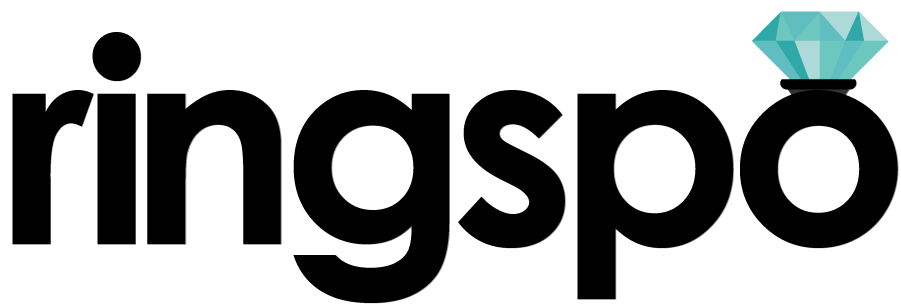Buying a diamond ring in the time of COVID-19
Is now a good time to buy an engagement ring?
It’s fair to say that the world is currently in turmoil. An impossible-to-predict event has resulted in lives lost, countries shut down, and plans of all types derailed. While we all hope we’re through the worst of it, it’s impossible to know how long the situation will last.
If you are planning on buying an engagement ring, it’s natural that you may wonder whether now is a good time to do so.
In this article, we’ll look at what diamond industry analysts say about the current situation and whether now is a good time to buy your engagement ring.

Ringspo is reader supported
Ringspo is reader-supported, which means we may receive a commission if you click a link to a retailer & subsequently make a purchase.
We feature links to several retailers to help readers find the one that is the best fit for them. Find out more about how Ringspo works here.
How COVID-19 has affected the diamond trade
Before we look at how whether it’s a good time to buy an engagement ring or not, it’s worth taking some time to understand the diamond industry itself.
The industry basically consists of five parts:
- Miners and producers, who mine rough diamonds, then sort and sell them. Major diamond mining countries include Russia, Botswana, Canada, Angola, South Africa, the Democratic Republic of the Congo, and Namibia
- Diamond markets and traders, where diamonds are bought and sold, then sent on to be processed. Major hubs for diamond trading are Antwerp (Belgium), Tel Aviv, and Dubai.
- Cutters and polishers: those who buy rough diamonds from the producers in the markets, then cut and polish them into their final forms. A large proportion of cutters and polishers are located in India and China.
- Jewelry manufacturers who create finished pieces.
- Retailers who sell the finished jewelry to consumers.
So you can see that it’s an international business.
One diamond could be mined in Botswana, travel to Antwerp to be sold, then on to India to be cut and polished, before heading to New York to be made into an engagement ring and then shipped to a jewelers in Seattle to be sold.
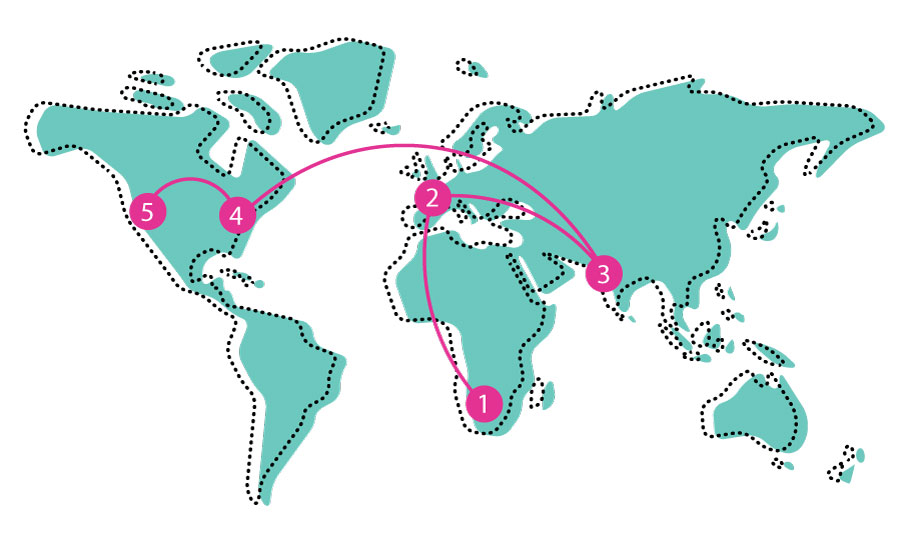
The diamond supply chain has slowed
A result of the restrictions has meant that all international trade has slowed hugely, and the diamond industry is no exception.
- Mine sites are producing fewer diamonds as workers’ travel is restricted
- India is in lockdown which means that diamonds can’t be cut and polished
- International freight is down which means all shipping takes longer
- Many cities that are the center of the diamond trade are in lockdown, which means markets are closed, jewelry manufacturers can’t work and retailers are closed.
All of this has had a huge effect on the supply of diamonds and engagement rings.
Prices of polished diamonds have fallen
Supply and demand is a pretty basic concept – if supply can’t keep up with demand then prices will rise until a balance is found. If there’s too much supply for the demand at that point in time then the price will fall.
In the case of diamonds, supply has fallen hugely.
But demand has fallen more.
As a result, the overall price for polished diamonds has fallen to its lowest price for at least five years:

Source: polishedprices.com
How diamond retailers have responded to the crisis
So far, we’ve been looking at the diamond industry; the behind-the-scenes supply chain which affects your purchase, but isn’t who you would actually buy your ring from.
Jewelers and retailers have obviously been hugely affected. How badly they have been affected will largely depend on where they are located.
If any part of the supply chain is in a state where a ‘shelter in place’ order has been given then it’s likely that they won’t be able to fulfil any orders until this is lifted.

This affects many online retailers, as well as bricks-and-mortar stores.
Some retailers have temporarily closed completely

Jewelry production is still a manual process. An engagement ring isn’t produced in a huge high-tech factory like an iPhone, it’s one craftsman at a time, meticulously adding tiny diamonds to a setting by hand.
The lockdown has meant that many people have had to work from home, but for jewelers this isn’t possible. Their tools and the expensive diamond inventory they work with has to be located at their place of work.
As a result, many diamond manufacturers have been forced to close and many jewelry stores, particularly small ones, have been forced to close too.
Some retailers have significant delays

Other retailers are managing to keep a supply going, but with a delay.
As we saw before, diamonds are an international business, and many retailers will only order diamonds from overseas once they have been ordered by the final consumer.
This is means that the diamond that you may be viewing on a US-based retailer’s online store may actually be held by a supplier in India. In cases like these, while they may be able to reserve the diamond for you, there may be a considerable delay before the diamond can be shipped out of the country it’s in and then added to a ring setting.
Some retailers have no delays

For retailers who have their own stock of diamonds in local storage facilities and where there is no local ‘shelter in place’ order, there may have no delay at all.
How has Covid-19 affected retail diamond prices?
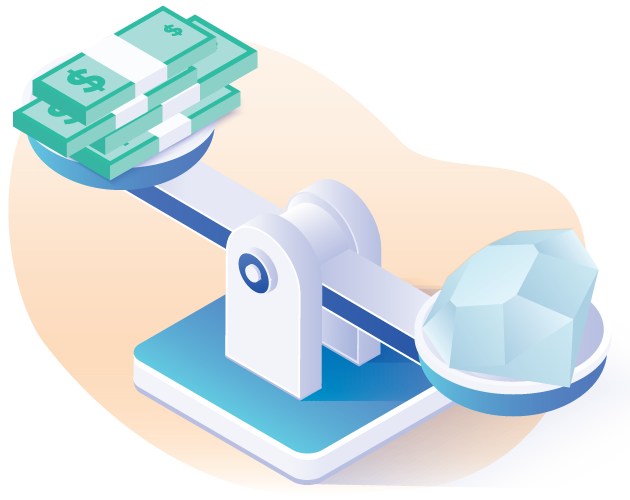
There are two things that you need to think about when it comes to considering how the current crisis has affected diamond prices:
1. How they have affected prices right now
2. How they will affect prices in the future
How has Covid-19 affected retail diamond prices?
There’s no simple answer to this, other than there has been a lot of volatility in retail prices.
General consensus appears to be that jewelers should reduce prices to ensure that they can ‘keep the lights on’ in their business.
This is going to be tough for them. While diamonds are expensive, the diamond trade is a low profit-margin industry. Online retailer Ritani shows the mark-up they make on every diamond on their website.
On a diamond that retails for $5,520, they make $187.29 – around 3.4%:
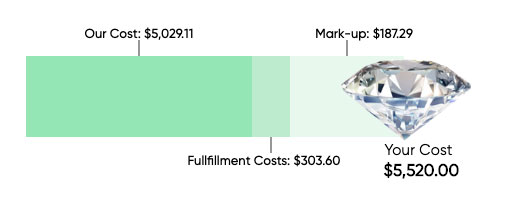
Any reductions to prices this are obviously going to reduce profit margins further, but it is something that many jewelers need to do to keep their businesses alive in these difficult times.
In a recent diamond industry webinar, 62% of retailers said that they would be reducing their prices to encourage sales:
How is this playing out in the real world?
Diamond search engine StoneAlgo monitors the price of over 1 million diamonds from several retailers’ inventories.
If we look back to 10th June 2019, the average price for a 1 carat, G color, Vs2 clarity diamond was $6,242:
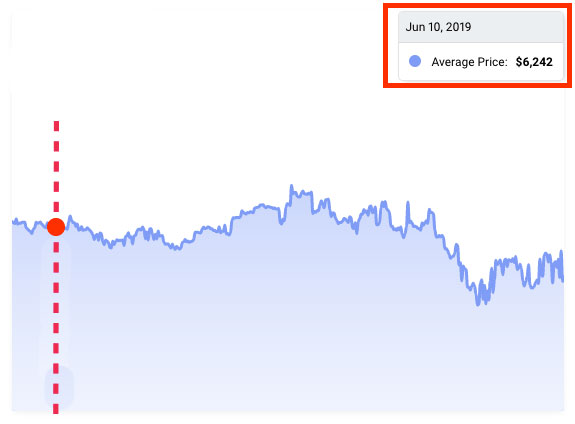
Fast forward to April 2020, in peak lockdown, and the average price had dropped to $5,799, a reduction of around 7%.
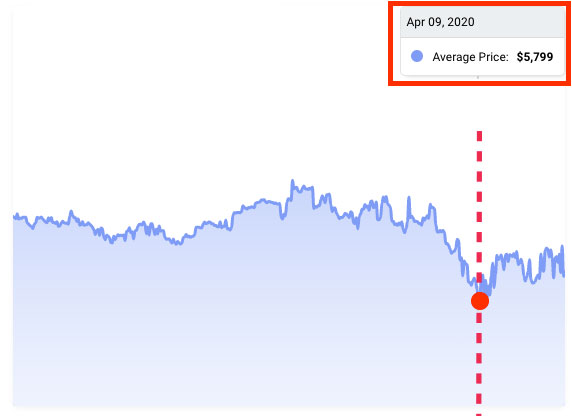
Looking at a June 2020 price and the price has rise to $5,933:
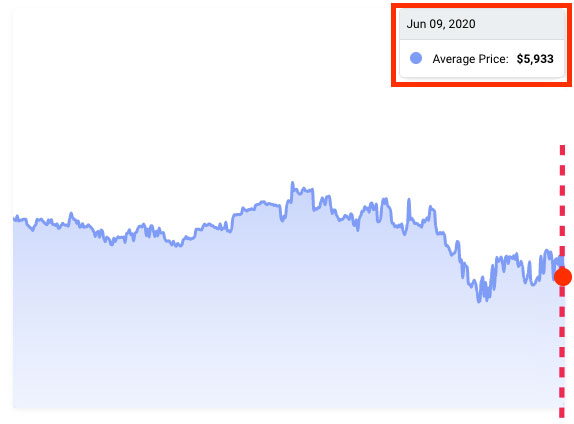
This price is still 5% lower than June 2019, but slightly increased compared to April 2020.
How diamond prices are likely to change in the future
While the pandemic, the lockdown and the economic slowdown are a new experience for everyone, the world has overcome major crises before, and if we look to what has happened to the diamond industry following past downturns then we can get a good idea of what is likely to happen in the future.
In his piece ‘Ruins to Resurrection’, diamond industry analyst Edahn Golan points out that after 9/11, diamond jewelry retail sales in the US soared 20%, and the value of diamonds set in jewelry sold in the US jumped 19% (compared to 7% globally), and gross polished diamonds imports into the US rose 15% in 2002.
If we look overseas then following the 2011 earthquake in Japan and the tsunami that accompanied it, diamond imports rose by 28.9% compared to the previous year.
So it seems likely that once a sense of normality returns and people are able to buy again, demand will increase quickly.
Increased demand can result in higher prices if supply can’t keep up, but it’s difficult to say how long-term the effects of the slowdown will be on the diamond supply chain.
What do the experts say?

As part of my research for this article, I contacted several diamond industry analysts to ask their opinion on whether they felt that now was a good time to buy an engagement ring.
These are experts who are engaged in objective analysis of the diamond supply chain and aren’t tied to a diamond manufacturer or a retailer. They don’t have a vested interest in promoting diamond sales as they are impartial observers and commentators.
For each of the analysts I asked the same question:
If a friend was considering buying an engagement ring right now, in the time of the pandemic, would you recommend that they do so? Or would you recommend that they hold off and wait?
The first industry analyst that replied was Edahn Golan, who offers data and analysis to leaders in the diamond industry. His response to the question was:

“Buying an engagement ring is a matter of the heart.
If a friend wants to propose, than yes, he should do it. No reason for a pandemic to prevent love or taking a relationship to the next stage.”
This was not the hard economics-based answer that I was expecting!
But it makes sense.
Making a decision on when to buy an engagement ring shouldn’t be a purely rational and economic decision – it should be a decision that is made when the time is right for you and your relationship.
The second analyst that replied was Paul Zimnisky. Paul delivers financial analytics about the diamond industry, is regularly published and was featured in the recent Netflix ‘Diamonds Explained’ documentary.
His response to the question is below:

“I would of course encourage diamond buyers to do homework before buying – especially taking the time to think about the cost/benefit decision regarding diamond size, quality, overall jewelry design and of course budget.
Also, go with a trusted source, make sure you are comfortable dealing with the seller as it could make the experience less stressful and even pleasurable. Perhaps most importantly, make sure the diamond has a story or is unique in a way that will make the recipient feel special.”
Again, this is not an answer rooted in the economics of the diamond trade and how the current situation might affect the price of a ring.
But again, it makes sense. When buying an engagement ring, the cost of the ring is just one factor. For one thing, cost isn’t the same as value, and two rings that cost the same could be delivering very different value.
It’s important when choosing your ring that you select a retailer you trust and are comfortable with so you’re confident in your purchase. Buying a diamond ring is a significant financial and emotional commitment and can be a daunting decision to make. The right retailer can help guide you through the process and ensure that the ring you choose is one that your partner will love.
Is now a good time to buy a diamond?

There’s no definitive answer to the question of whether now is the right time for you to buy your engagement ring, but I’ve tried to give you an understanding of the things to take into consideration when making your decision.
Like many industries, the diamond industry has been impacted by the global slowdown. As a result, jewelry retailers need to generate sales and a significant percentage are willing to reduce prices to encourage them. As a consumer, that is a good thing – it means lower prices for you.
It also means that you are supporting retailers and helping them get through this difficult period.
It seems unlikely that prices will fall more and if the industry follows past patterns then there is likely to be an increase in demand as the economy opens up.
The other thing to consider is your own financial position. If you’re considering a purchase, it’s likely that you’ve been saving to put yourself in a position to do so. If you feel financially secure enough to make a purchase then now appears to be a good time to find your ring and start the next stage of your life together with your partner.
